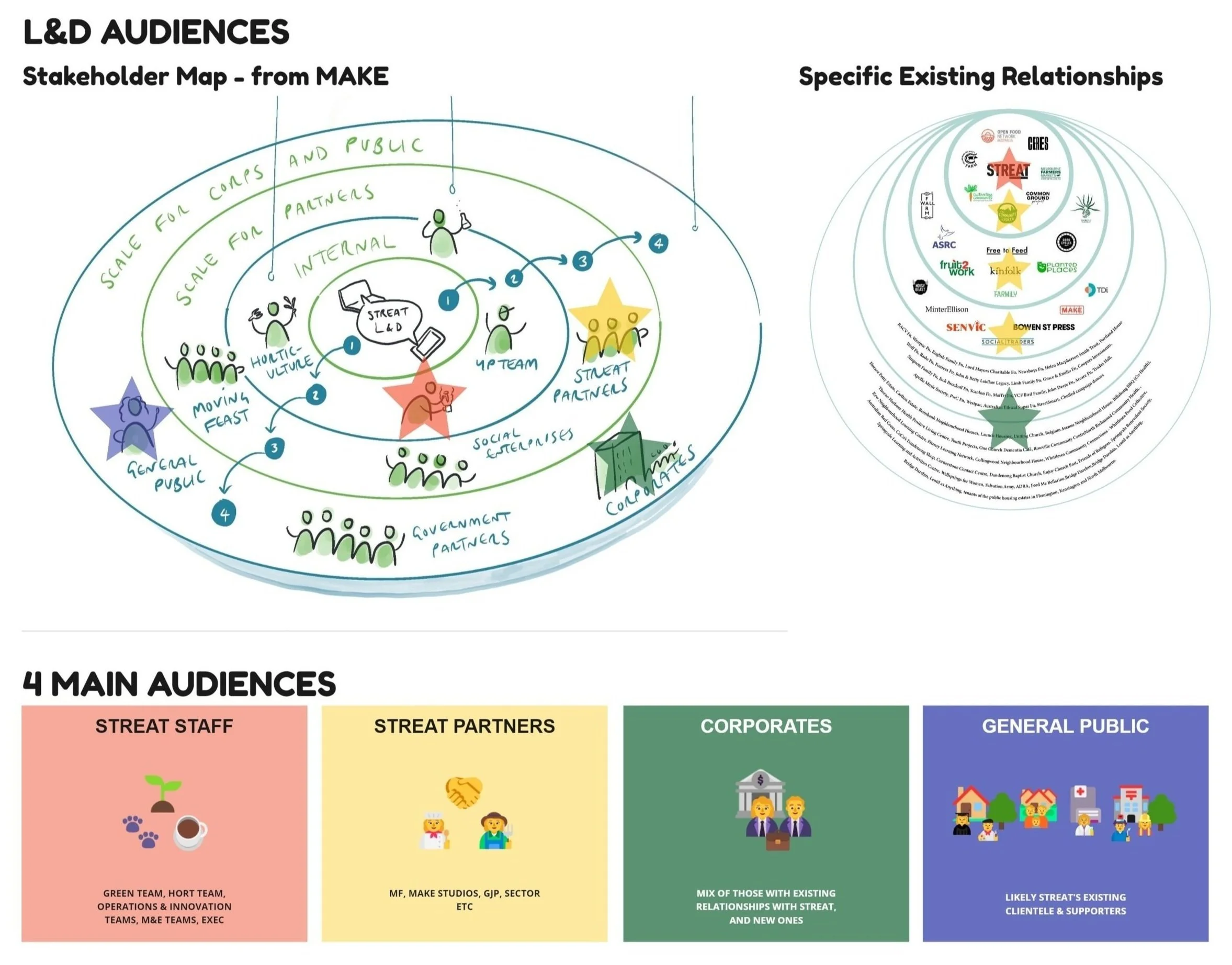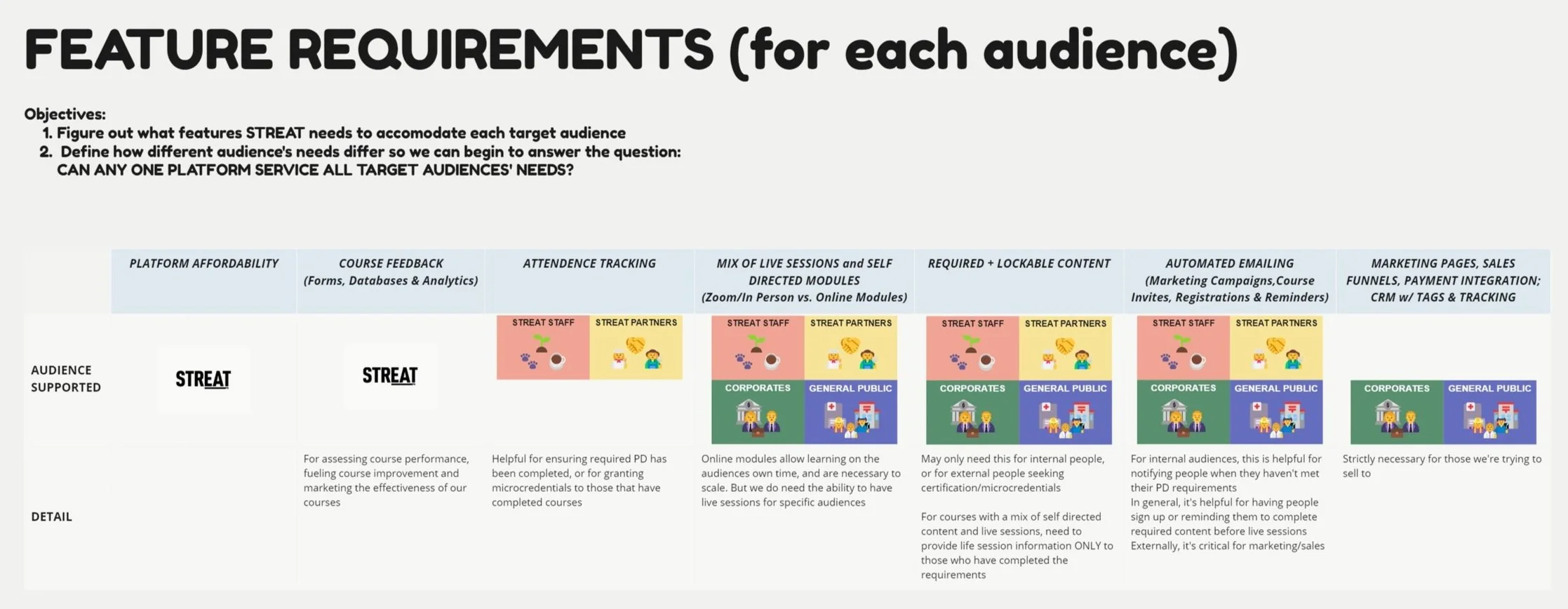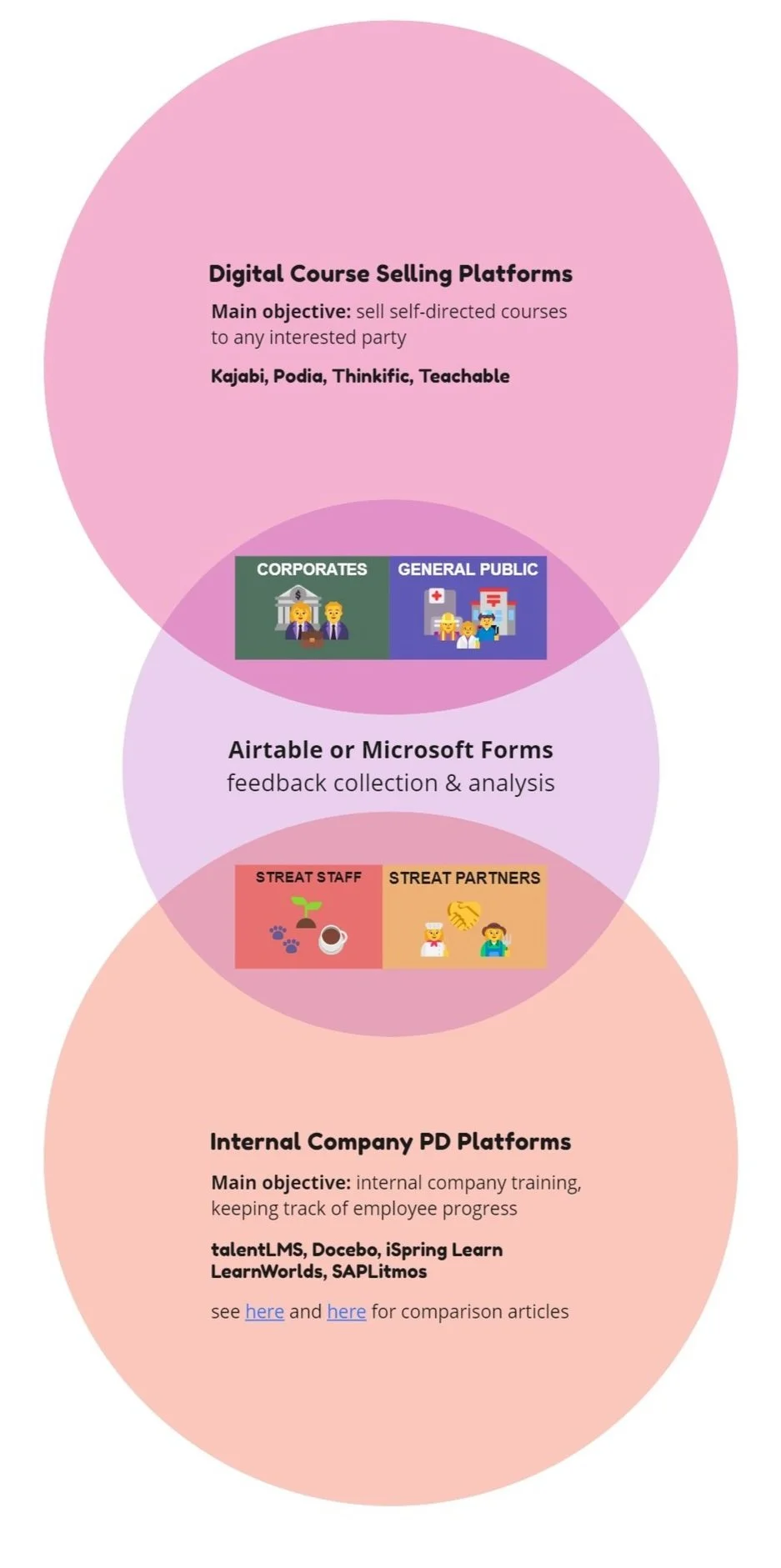WEB DESIGN PROJECT
Creating a Companion Website for an Academic Design Research Project
SUMMARY
Researching and recommending platforms to service STREAT’s expansion into the workplace training market to empower other businesses and build a new revenue stream.
KEY SKILLS
Information Architecture
Web Design & Development
MY ROLE
Designer & Developer
CLIENT
Lisa Grocott, a design researcher at Monash University
TOOLS USED
Custom HTML & CSS
Cargo Collective
Miro
THE BACKSTORY
For participatory design academics, distributing not just their research theories, but the research tools themselves, is a crucial part of any successful research project. Lisa Grocott, a design academic at Monash University, came to me looking to collaborate on a website so that she could easily share her research tools with her design partners around the globe.
THE CHALLENGE
How might we make Lisa’s participatory design theories and tools available to her fellow designers & collaborators to increase the spread, accessibility & impact of her work?
This challenge comes with a few notable constraints: the project must be completed in two weeks to be submitted for a design research award that helps publicise new academic research work. Also, the site must be somewhat easy to modify if Lisa wants to add content at a later date.
KEY STAKEHOLDERS
STREAT has a complex web of relationships with both internal and external stakeholders, so mapping these potential user groups was the first step in identifying platform needs.
We came up with four core groups - internal STAFF, partnering NFPs, partnering CORPORATES, and existing and potential clientele from the GENERAL PUBLIC. We then grouped these user types into two major categories - internal and external audiences - and explored their interests and needs from there.
The key stakeholders can be broken down into four groups:
-

STREAT staff
-

Sector Partners
-

Partnering Corporates
-

General Public
PLATFORM OPTIONS
After identifying each group’s interests and needs, we examined what platform features would be necessary to support each group. To understand how these needs overlapped or differed between user groups, we assembled these needs into a matrix to search for the largest audiences with common requirements.
Next, we began searching for feature-rich yet cost-effective Learning Management Systems and outlining their features for comparison.
This is a hugely important step in order to keep expenditure down - we’re looking for the platform that can support key audience needs without breaking the bank. Keeping cost down and ease of setup are crucial elements of this project, so it’s essential to find a singular, easy to use platform that can support the most users.
TAKEAWAYS
Most LMS’s feature sets support either internal training OR external audiences, NOT BOTH
education and professional development platforms often offer progress tracking, assignments, and grading
course selling platforms typically support self-directed classes (no live sessions), sales funnels, marketing sites, and email marketing campaigns
Two options best serve STREAT’s needs:
2 separate platforms for internal and external training
integrating multiple services to create the ideal feature set, rather than continuing to search for that in an existing LMS
Platform cost is either tied to the number of courses or the number of students
Digital course-selling platforms tie cost to courses and marketing funnels
Internal training platforms base cost on the number of employees enrolled
RESULTS & NEXT STEPS
WHAT WAS THE RESULT OF THIS RESEARCH & WORKSHOP?
My investigation into user needs and available platforms lead the Chief Impact Officer to realise how different the internal and external training needs are, and to use the company’s existing subscription to Airtable to manage internal training tracking, and to start a trial with Kajabi for their external courses and marketing needs.
FUTURE STEPS?
To further support this project, I would:
Assist the L&D team in building and testing their first marketing site and email marketing funnel
Assist the L&D team in building out their first course, delineating the independent and guided segments
Test the independent course segments with internal company staff before moving on to testing with partnering NFPs corporates.





